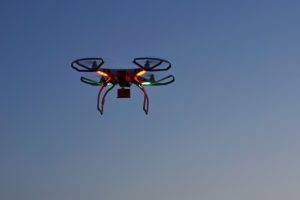AUVSI’s North Carolina chapter and DRONELIFE host free webinars and chat rooms monthly, where drone pilots from all over the country can get their questions answered by a panel of experts. This month, AUVSI NC hosted two representatives from the FAA: UAS Integration Program Manager Michael O’Shea and Aviation Safety Analyst John Meehan. O’Shea and Meehan answered the most commonly asked questions about waivers and authorizations. (Check out the list of helpful links at the end.)
Waivers and Authorizations: Which is Which?
“When discussing waivers and authorizations, one of the most common and confusing questions is which is which,” says Darshan Divakaran, the founding President of AUVSI North Carolina. “What is a waiver, and what is an authorization – and when do you need each of them?”
First of all, explains Meehan, you have to know which set of rules you are flying under. Some rules are “waivable” – but others require an exemption, and the two processes are different. Public aircraft flight rules, or civil aircraft over 55 pounds are flying under 14 CFR Part 91. Civil drones under 55 pounds are flown under Part 107. If your mission means that you cannot fully comply with the rules of Part 107 – for example, you must fly at night, or beyond visual line of sight (BVLOS) – you’ll need to apply for a waiver. (Not all rules are waivable: aircraft weight, for example.)
When you are talking about an authorization, you’re talking about an airspace authorization – permission to fly in certain airspace under the existing rules. (Airspace authorizations can be applied for under the LAANC program.)
Why Did My Application Get Denied?
Another very common question about FAA waivers and authorizations is why an application was denied: and the answer to that, says Meehan, is clear.
“Most waiver applications that come in get denied,” said Meehan. “The main reason for that is that the FAA needs you to reassure them that what you are going to be doing is just as safe – if not safer – than flying under the usual rules.” That’s safety for everyone, not just for the mission itself. It’s important to remember, Meehan says, that the FAA cares about aviation safety. Applications need to consider risks to non-participating aircraft and persons on the ground.
Also, says Meehan, it’s important to be very specific when filling out the application. Questions that ask “how” or “what procedure” require detailed and specific answers: think about the checklists used by manned aircraft pilots. “There’s a reason that airlines love checklists,” says Meehan. “It’s because they work.” When the application says “Demonstrate and document knowledge” that means that the applicant must specify how they are going to train, test, and keep records of testing results for all of the relevant personnel.
How Can I Improve My Chances of Receiving a Waiver?
The best way to improve your chances of receiving a waiver is to look at other similar waiver applications that have been approved. Don’t, however, copy the waiver issued – that is issued by the FAA and explains what the waiver allows. Nor should you just cut and paste somebody else’s waiver application: another company’s application may not exactly match your situation, or may be several years old and no longer exactly applicable.
“Look at the waiver application carefully and go through the thought process to see what’s going to apply to your situation,” said Meehan.
Most importantly, says Meehan, you need to take the application process – and the flight missions – seriously. “We consider you – no kidding – to be aviators,” says Meehan. “Aviators know their business and operate under a culture of safety.”
“Our primary mission is to keep the national airspace safe,” says O’Shea.
Some helpful links:
The Electronic Code of Federal Regulations
Waiver Safety Explanation Guidelines
Miriam McNabb is the Editor-in-Chief of DRONELIFE and CEO of JobForDrones, a professional drone services marketplace, and a fascinated observer of the emerging drone industry and the regulatory environment for drones. Miriam has penned over 3,000 articles focused on the commercial drone space and is an international speaker and recognized figure in the industry. Miriam has a degree from the University of Chicago and over 20 years of experience in high tech sales and marketing for new technologies.
For drone industry consulting or writing, Email Miriam.
TWITTER:@spaldingbarker
Subscribe to DroneLife here.
https://dronelife.com/2020/09/25/faq-waivers-and-authorizations-faa-representatives-answer-common-questions/
 Unmanned Aerial Vehicle The latest drone news
Unmanned Aerial Vehicle The latest drone news




